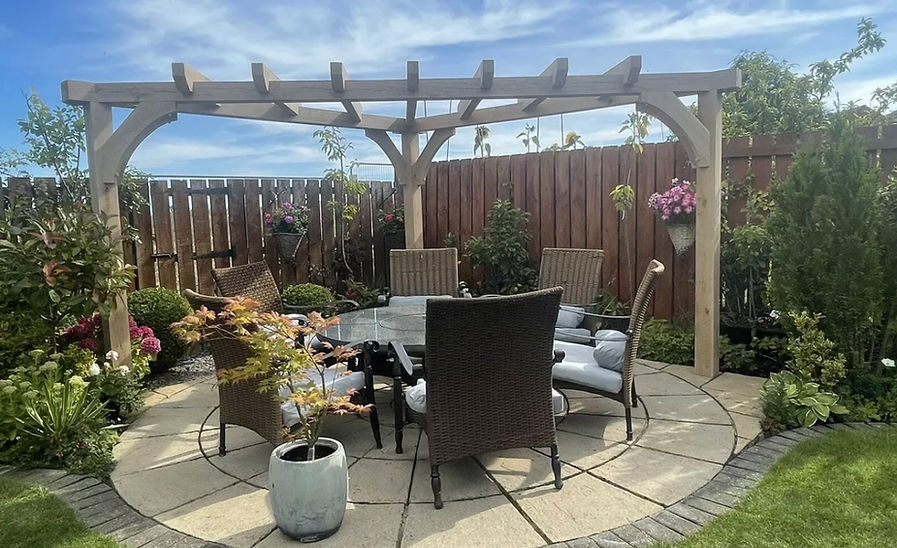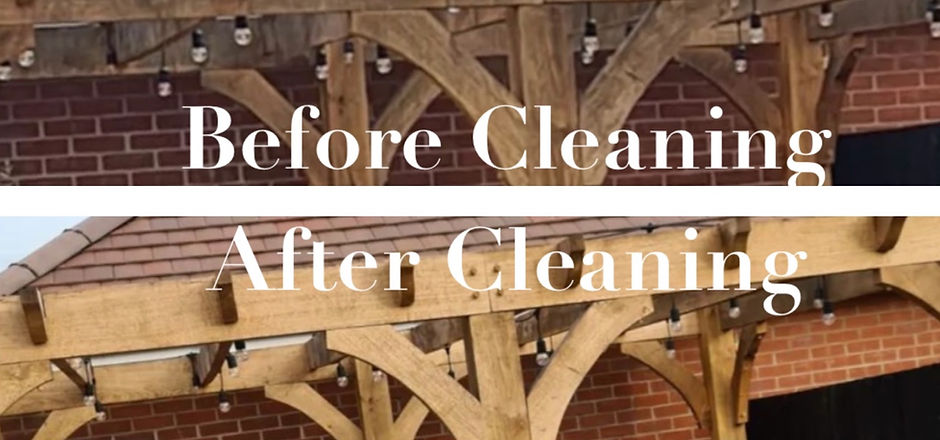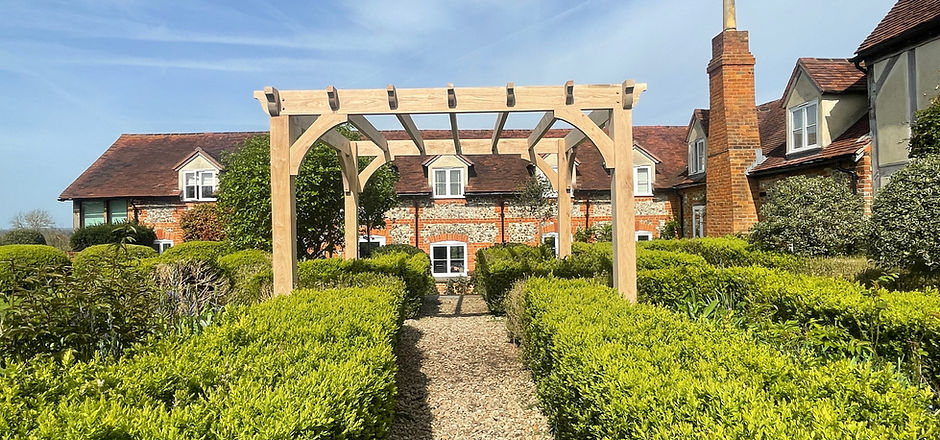We handmake, deliver and fit throught the UK!

Splits and Cracks
We are frequently asked about splits and cracks in oak. Why does it happen? And will it damage the oak structure? The simple answer is they are totally natural and nothing to worry about! As oak dries out it shrinks across the grain and develops splits and cracks, sometimes also called ‘shakes’. As the grading system limits the angle at which the grain runs along any one piece of oak, the splits and cracks which open up as the fibres dry and separate do not traverse the beams’ grain and thus do not weaken it. Furthermore, a good design will allow for shrinkage, ensuring that joints and pegs in the frame become stronger during this process and give the oak its unique, natural character.

Green Oak Maintenance requirements
As wood’s natural habitat is the great outdoors, it is naturally weather resistant. Left untreated the oak will weather to a silver colour in around a year. If required, a lighter colour can be retained if the wood is treated or sealed before it is exposed to the elements. Remember though, that if you do this, you are signing up to a lifetime of repeat coats as the weather erodes the treatment off. We also recommend that you check the colour on an off-cut of oak timber if you do intend to treat it so you can get exactly what you want.
Areas of water forming on the surface of the beams during construction are often unavoidable when building outside and will affect the colour and leave watermarks. If staining occurs it can be cleaned with oxalic acid after the structure is weather tight and the staining removed.
Due to its high tannin content and because it is a breathable material, which allows moisture and humidity to pass freely through it, oak is also highly resistant to insect and fungal attack.
In order to preserve oak’s hue and prevent it from sun bleaching, a liquid wax with UV protection can be applied. The wax simply sinks into the oak and is not visible to the naked eye. This treatment can also be applied to oak used internally. Osmo has an excellent range which we would recommend. Follow the manufacturer's instructions.

It’s All About The Finish
At world of Wood Suffolk, we take pride in ensuring the oak we supply for your garden is of the highest quality and finish. Your oak is also stress graded. unless otherwise requested, all of our green oak products are given a light hand plained surface finish to remove any imperfections. This way, the oak is smooth to touch and devoid of ugly saw mill marks, ready to start ageing and developing its own character with more splits and cracks over the coming years.

Treating Your New Oak Pergola
In short there are three options for your oak pergola, please see below for these!
1. Natural - Let your oak turn silver - the silvering process can take between 6 months and 2 years to turn silver this will depend on the time of year your pergola is erected, this process looks patchy for a period of time and will turn black in parts then turn silver - it’s all part of the process! The acidic properties within oak when reacting with water turns black, the sun is what bleaches the oak and turns it silver, this can go through an “ugly” stage however this is completely normal, natural and will turn silver over time.
2. Osmo 420 extra offers UV resistance and also contains biocide, The oil also repels water, thus preventing it from going black. We like to describe this a bit like sun cream for oak! It won’t stop the silvering however the oak will turn silver x12 slower and more evenly, you can’t keep re applying this every year as it forms a layer a little like cling film and will eventually peel off, so initial treatment is fine however will still turn silver eventually.
3. Osmo Stains - The darker the pigments within a stain the harder it is for UV rays to bleach the oak and turn it silver Osmo do a fab range of colours including a Light Oak stain and a Dark Oak stain, we have a picture on this page to view of this.
If your oak has started to blacken and the silvering process has started before you have managed to treat it Osmo sell a “Revive Gel” following the manufacturer’s instructions this can bring the oak back to a more desired colour, if this product isn’t quite strong enough Oxalic acid can be used - Oxalic acid can be extremely harmful and must only be used with protective equipment reading and following the instructions of the manufacture.
Please remember! Your pergola will never look the same as the first day it was fitted, Oak is a natural product and as such we can do our best at preventing blackening, silvering cracking and splitting but ultimately it’s outside and is subject to the great British weather so sometimes this is unavoidable!

Attaching Items to your pergola
Whilst many of our customers attach lighting, hanging baskets and grow beautiful plants over their pergolas, we do not recommend hanging swings, hammocks or such like to the Pergolas they are made to be sat under not sat on!
External fittings of frames exposed to the weather can also develop brown oak tannin stains towards their base. Ferrous fixings such as nails or hinges will also cause staining over time. This can be avoided by using brass fixings, or marine grade 316 or A4 stainless steel fixings.
These will not react with water, avoiding the problem all together.

Tannin Marks
What is tannins? Tannins are the acidic chemicals found in the oak’s liquid sap. When the oak is first cut and newly-erected, the natural drying out process draws out the tannins causing visible brown stains. During this process, its best to avoid metal contact on the oak frame. You will also find that damp conditions accelerate the speed at which tannins will appear.
Although we will do our best to minimise tannin marks during the manufacturing process, you may notice tannin marks on the frame of the pergola and braces when it is delivered.
HOW TO TREAT TANNINS?
If you have excessive marks on your pergola, they can be removed using a product called Oxalic acid from Rubio Monocoat. You can purchase this online. Alternatively if you wait until the oak has dried completely you will find the tannin marks will disappear.
Exposure to the elements may cause oak to bleed onto brickwork, stones and patio areas, which can leave rust like stains. These stains will fade in time and, if desired, can be cleaned with a suitable cleaner. Different surfaces may require different tannin remover products, we are un able to advise which product is best for your type of patio. Please follow. manufacturer instructions

Woodworm Preventative
Woodworm, also known as Furniture Beetle (Anobium Punctatum)
Woodworm prefer dry softwood but will eat hardwoods such as oak. As with the other species the tunnels are made by the larvae which hatch from eggs laid in small cracks, or old flight holes. The woodworm tunnels normally follow along the line of the grain, up and down the length of the wood.
After hatching the woodworm larvae will become adults in 3 to 5 years, the length of their life depending on the quality of the available food source.
There are many woodworm preventatives on the market for use, this can be used before or after Osmo treatment.
Please get in touch to discuss custom commissions.

